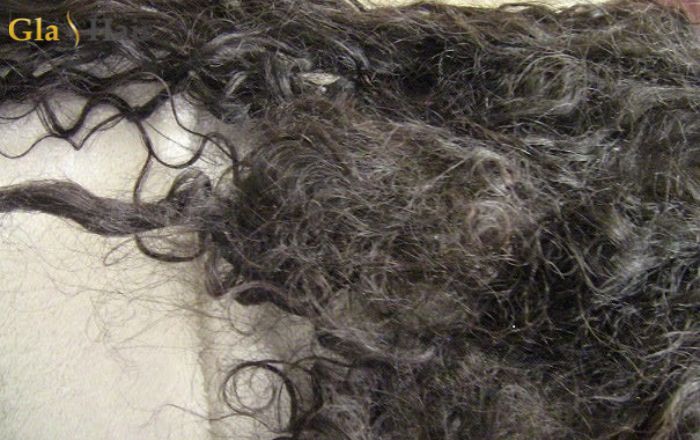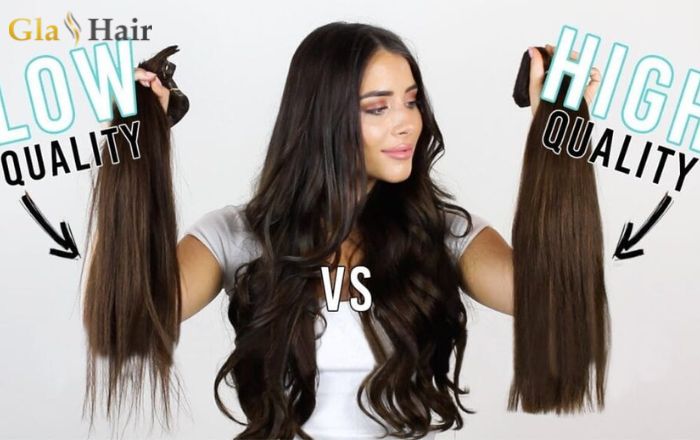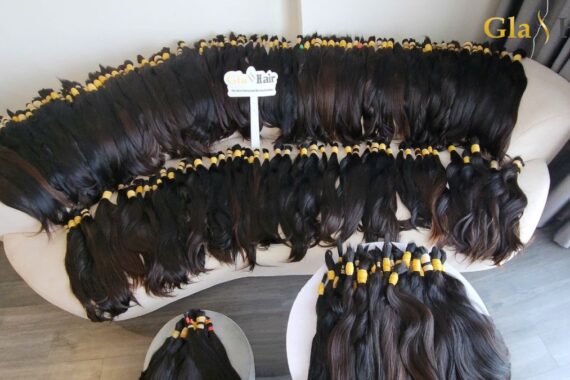
Finding a reliable raw hair supplier is one of the biggest challenges for salons, wig makers, and wholesale buyers. With so many sellers online—especially from regions without strong industry regulation—it’s easy to fall victim to misleading marketing, fake “factory” profiles, and low-quality hair disguised as premium raw hair.
To protect your business, you need to understand the bad raw hair vendor signs that reveal a supplier is not trustworthy. In this guide, we break down the most common red flags and explain how to avoid scams raw hair vendors use to trick buyers.
Contents
- 1 Prices that are “Too good to be true”
- 2 No proof of being real raw hair vendors
- 3 Fake “raw hair” that is actually steamed or processed
- 4 No clear sourcing information
- 5 Sellers avoid live testing or sample verification
- 6 Poor communication or pressure to buy quickly
- 7 No customer reviews or fake testimonials
- 8 Inconsistent quality between orders
- 9 How to avoid scams raw hair vendors
Prices that are “Too good to be true”
Extremely cheap “raw hair” prices are one of the strongest warning signs of a low-quality raw hair vendor.
Why this is a red flag:
- Real raw hair comes from donors and must be collected, sorted, and processed manually, which makes it more expensive than steam-processed or mixed hair.
- Vendors offering “super cheap raw hair” often sell chemically coated hair or hair mixed with synthetic fibers.
- Ultra-low prices usually indicate factory rejects, non-remy hair, or hair that will tangle after a few uses.
How to protect yourself:
- Compare the supplier’s price with market averages.
- Ask for detailed explanation of pricing and sourcing.
- If the price sounds unbelievable, believe it’s a scam—not a deal.
No proof of being real raw hair vendors
One of the biggest bad raw hair vendor signs is the lack of transparency about the business’s true identity.
Why this is a red flag:
- Many online sellers pretend to be factories but are actually resellers or middlemen.
- Fake factories often steal photos or videos from legitimate manufacturers to appear professional.
- Without real production facilities, vendors cannot control quality or consistency.
How to protect yourself:
- Request live factory video calls.
- Ask for real-time clips showing workers sorting or preparing hair.
- Verify whether their videos appear in other sellers’ pages (a common scam).

Fake “raw hair” that is actually steamed or processed
Many low-quality suppliers sell steamed hair but label it “raw” to attract buyers.
Why this is a red flag:
- Real raw hair has natural waves that vary from bundle to bundle because it comes directly from donors.
- Identical curl patterns in every bundle usually indicate steam processing.
- Steam-processed hair loses quality quickly, tangles easily, and cannot lift to blonde.
How to protect yourself:
- Ask for a wash test video to see the hair’s true pattern.
- Request bleach-test footage to confirm lifting ability.
- Avoid suppliers who refuse testing or provide excuses.
No clear sourcing information
Reputable suppliers are transparent about where their hair comes from.
Why this is a red flag:
- Scammers avoid answering sourcing questions because they buy hair from random collections, waste hair markets, or mixed leftovers.
- Hair from unknown sources often contains non-remy fibers that cause tangling and shedding.
How to protect yourself:
- Ask where donors are located and how the hair is collected.
- Look for consistent sourcing stories—not vague answers like “Asia” or “multiple regions.”

Sellers avoid live testing or sample verification
If a vendor refuses hair testing or discourages samples, it’s a major red flag.
Why this is a red flag:
- Low-quality vendors know their hair won’t pass bleaching or brushing tests.
- They try to push bulk orders without allowing buyers to verify the quality.
How to protect yourself:
- Always request samples before buying wholesale.
- Ask for real-time testing videos (wash test, bleach test, tangle test).
- A trustworthy supplier will never hesitate to show product performance.
Poor communication or pressure to buy quickly
Bad vendors often use emotional pressure instead of professionalism.
Why this is a red flag:
- Scammers often push buyers to “order now before prices increase.”
- They refuse to answer detailed questions and avoid transparency.
- Unprofessional communication shows they don’t care about long-term relationships.
How to protect yourself:
- Pay attention to how fast and clearly they respond.
- Look for organized communication, not rushing or pressuring.
- Avoid suppliers who refuse to give clear written details.

No customer reviews or fake testimonials
A trustworthy hair vendor will always have verifiable feedback.
Why this is a red flag:
- Scammers often display stolen photos from other vendors.
- Fake reviews usually look overly perfect, with no real-time videos or customer tags.
- A complete lack of repeat customers is a sign that the hair quality is poor.
How to protect yourself:
- Ask for contact of previous buyers (especially salons or wig makers).
- Check video reviews, not just images.
- Avoid vendors whose testimonials appear on multiple unrelated pages online.
Inconsistent quality between orders
Many buyers receive good samples but bad bulk hair—a common scam tactic.
Why this is a red flag:
- Untrustworthy sellers buy premium hair for samples but ship cheap hair for bulk orders.
- Inconsistent quality leads to customer complaints, returns, and massive business losses.
- This is one of the most dangerous bad raw hair vendor signs because it targets wholesale buyers.
How to protect yourself:
- Request batch videos before shipment.
- Confirm weight, length, and texture consistency on camera.
- Work only with vendors who allow verification of your exact order.

How to avoid scams raw hair vendors
To protect yourself and your business, follow these essential steps:
- Always test before buying wholesale (bleach test, wash test, tangle test).
- Request real factory proof such as live videos and inventory checks.
- Choose vendors with consistent sourcing and transparent processes.
- Verify order batches before shipment to ensure you receive the same quality shown in samples.
- Avoid vendors with pushy sales tactics or vague communication.
Doing these simple checks dramatically reduces your risk and ensures you invest only in true raw hair that meets customer expectations.
Conclusion
Identifying low-quality suppliers becomes easy once you learn the most common bad raw hair vendor signs. With thousands of sellers claiming to offer “100% raw hair,” it’s crucial to protect your business by doing proper verification and understanding how to avoid scams raw hair buyers face every day. By choosing reputable suppliers, requesting quality tests, and analyzing transparency, you ensure long-term success and delivery of premium hair to your customers.








